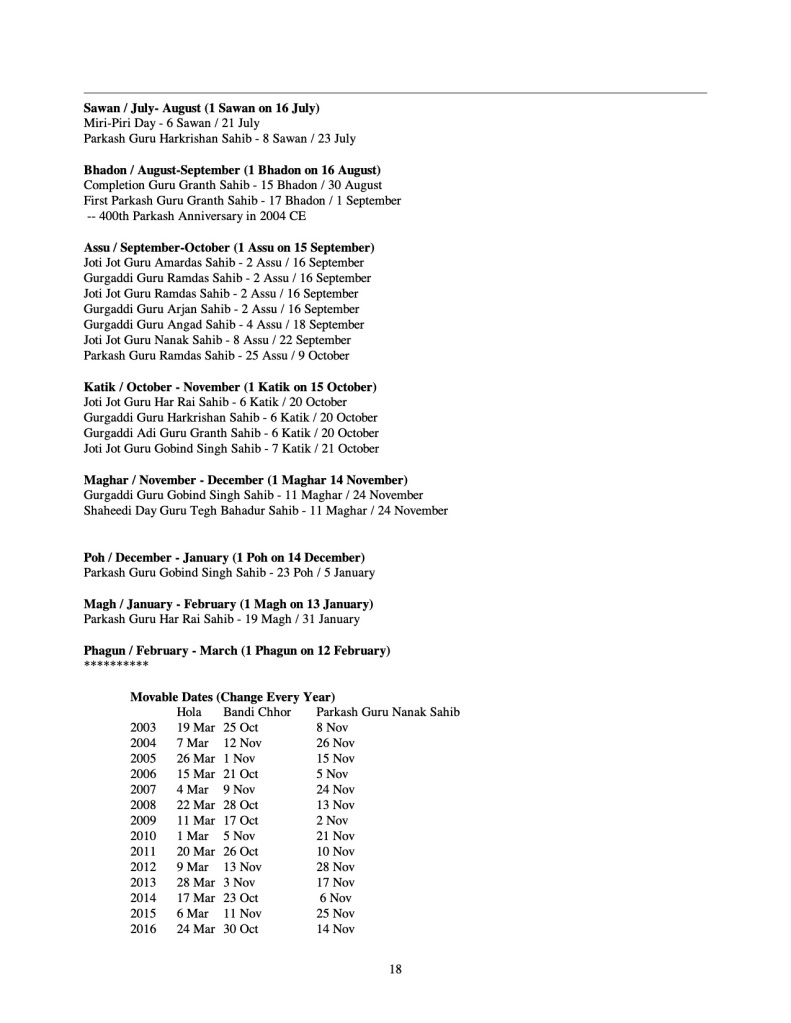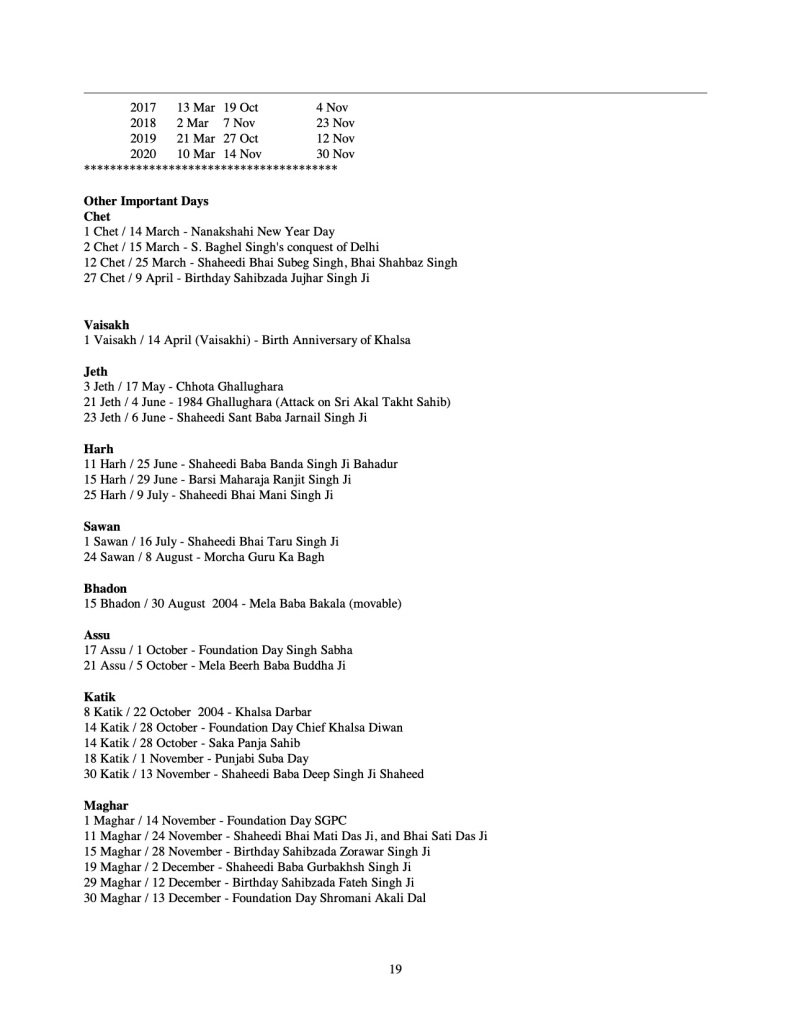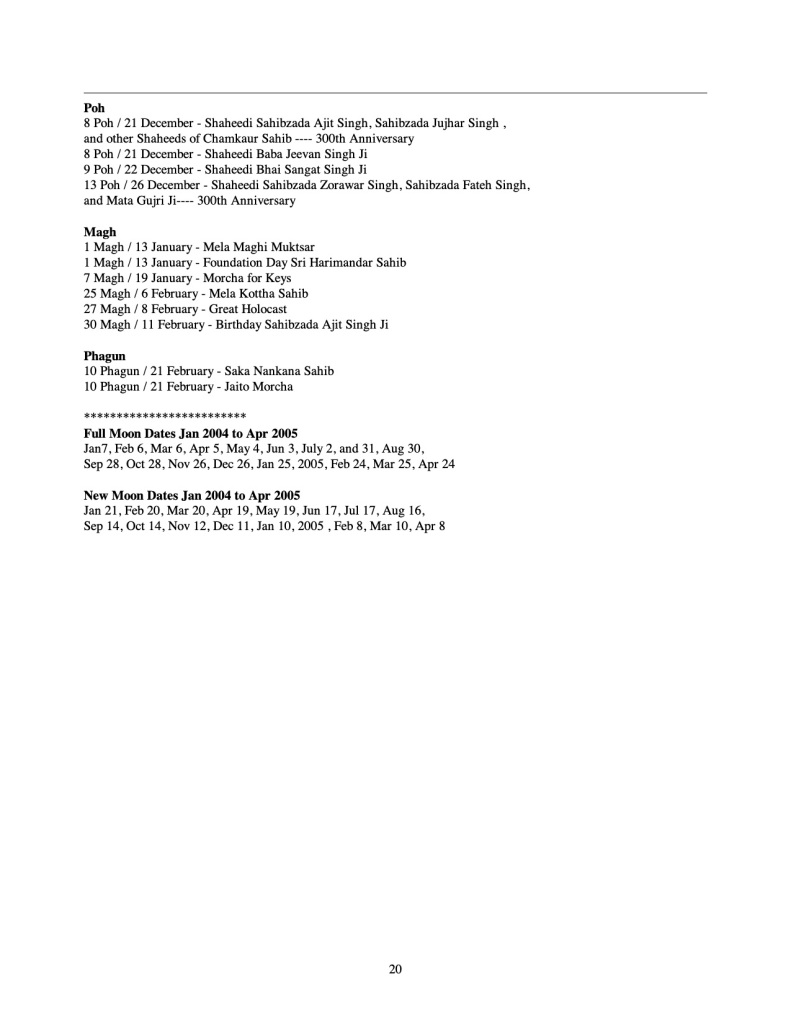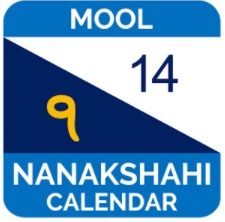Pal Singh Purewal, Edmonton http://www.purewal.biz

Guru Nanak Sahib had spent almost a quarter of a century travelling and spreading the word in the world. Since most of his travels were on foot, he must have spent countless summer nights in the lap of nature. He observed physical phenomena, and his bani portrays some of them. It is true that his aim was not to highlight the phenomena but to impart true knowledge using them as a vehicle, since people could relate to them. From amongst such phenomena mention may be made of the formation of day and night, the month – lunar and solar, the year, the movement of the luminaries – the sun, the moon, and the stars, formation of seasons, the twelve months of the year, the tithi (lunar day), and the division of the day by man into smaller units of time such as pehar, muhurat, ghati,pal, visuaye, chasuaye, and yugas – the mega units of time. These units are the basic building blocks of Hindu calendars. Mention of these is made in Guru Granth Sahib. In Tukhari Raga Guru Sahib records the appearance of a comet in the sky.



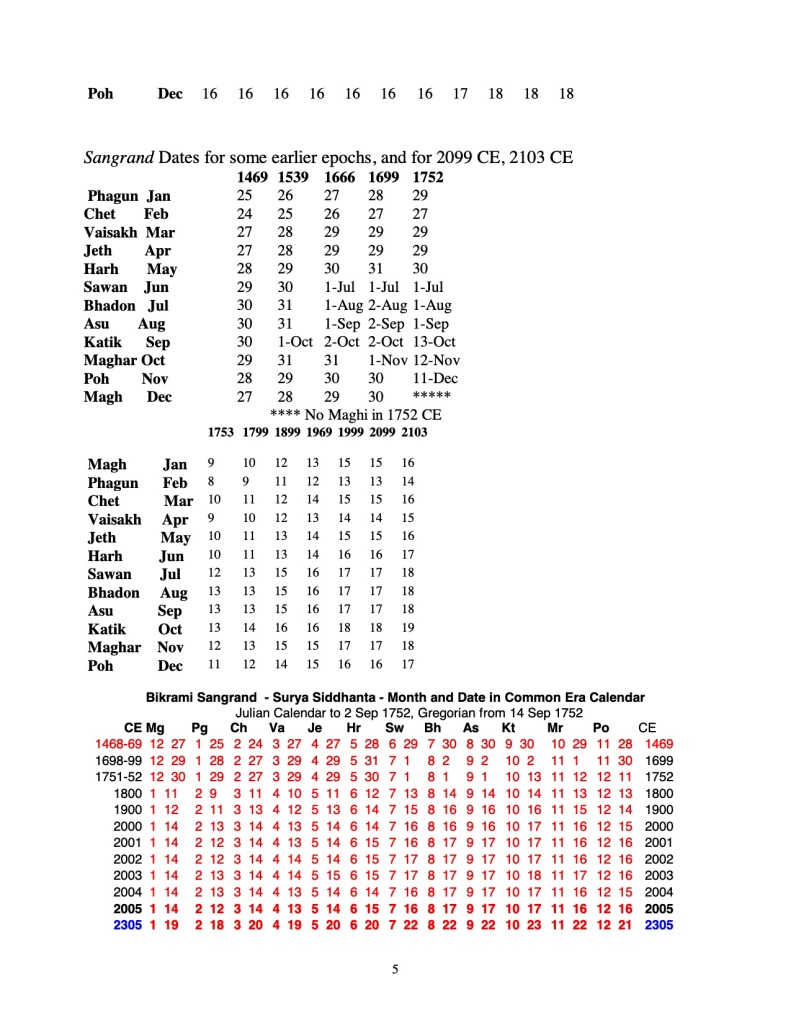



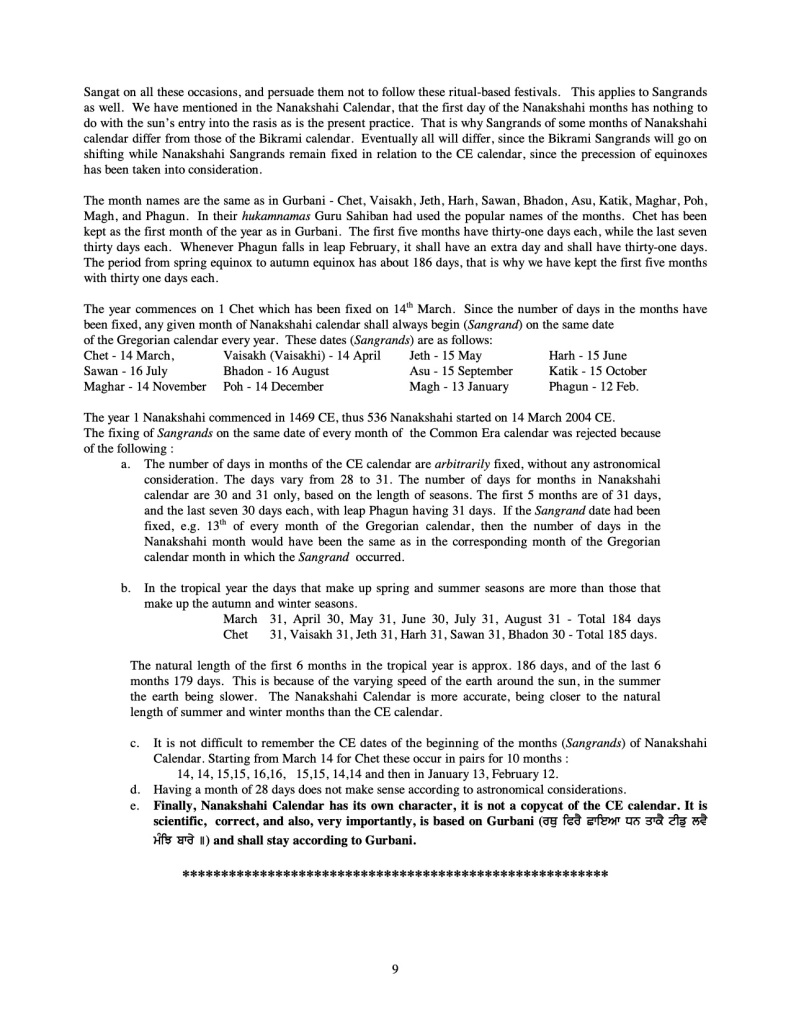

1 Based on length of Tropical year 365d 5h 48m 45s
2 Days in months 31 or 30; first five months contain
31 days each and last seven 30 days each -a very
simple rule to remember.
3 Fixed leap year rule -last month to have 1 extra day
every four years
4 Fixed dates of Sangrands in Common Era
5 Permanent relation between seasons and months; will stay according to Gurbani
6 Gurpurbs on fixed dates according to both Nanakshahi and Common Era calendars
7 All Gurpurbs occur once every year, according to both NS and CE calendars.
8 No ‘unclean’ month (malmaas) in the year. No month or day is ‘clean’ or ‘unclean’ according to Gurbani
9 Gurpurbs fixed according to solar dates e.g. 23 Poh
for Parkash of Guru Gobind Singh Sahib, and 23
th
Poh will always occur on 5 January. (We gave
precedence to the original solar dates over the lunar dates and English dates.)
Based on Sidereal year 365d 6h 9m 10s
Months may contain 29,30,31 or 32 days; no simple rule for determination of the number of days in a given month
No fixed rule
Sangrand depends on entrance of sun into ‘rasis’, dates of Sangrands not fixed in Common Era Months will shift in seasons – on the average by 1 dayper70/71years-alreadyshiftof7/8days since Guru Nanak Sahib’s time
Gurpurb dates change from year to year in CE calendar
In some years no Parkash Gurpurb of Guru Gobind Singh Sahib, while in others it occurs twice in one year of the CE calendar. In 1999 CE there was no Parkash Gurpurb of Guru Gobind Singh Sahib.
A ‘mal mas’ or ‘unclean month’ is added every two or three years in the lunar year to keep it in step with the solar year. In this month Gurpurbs cannot becelebrated. Thiswholethingiscontraryto Gurbani.
Gurpurbs fixed according to lunar dates e.g Poh Sudi 7, therefore, changing from year to year in CE calendar. The lunar year contains 354 / 355 days while solar year 365 / 366 days. When ‘mal mas’ is added the lunar year becomes 383 / 384 days long.
Some of the objections raised in public meetings by the opponents of the Nanakshahi Calendar:
Objection: Since, in Guru Granth Sahib the tuk “ !”
relates to the Bikrami calendar date, and that there are Banis in Guru Granth Sahib related to tithis, we cannot give up Bikrami calendar. Further, if we give up Bikrami calendar how are we to explain the meaning of this line to our children?
Answer:
see image above
Another
problem of the lunar calendar is that the same ‘tithi’ can happen on two days or two ‘tithis’ can happen on one day.







